#DelosYourself and Fight the Battle Against “Tech Neck”
Let’s play a game: the next time you’re walking to work, wandering the grocery store, or sitting on the bus, count how many people around you are looking down at a screen of some sorts.
Did you lose count yet? Us too. There’s no denying we live in a screen-dependent society these days, and one of the consequences of hunching over our phones and computers almost all day is the dreaded “tech neck.”
What is “tech neck” and how do you get it?
It’s a real problem, and it affects all ages — from Snapchat-streaking teens to older adults leaning closer to read off a tablet. In fact, Eric Owens, co-founder of Delos Therapy says it’s “probably the most common thing we see at Delos.”
“[Tech neck] comes from sitting at a desk, looking at cell phones, computers, and keyboards,” he explains.
Think about your typical desk job: you get in a zone, you focus on the screen in front of you and stare it at for hours at a time. Or, perhaps your job keeps you on the phone for conference calls, customer check-ins, and other meetings — so you cradle the phone in between your ear and your neck, elevating one shoulder so the receiver doesn’t slip.
For most of us relegated to a desk, your neck muscles are strained for eight hours a day, Owens points out.
“That strain leads to pain in back of your neck and between your shoulder blades and trapezius muscle. Plus, being in that hunched position will dramatically change your posture,” Owens cautions.
And poor posture doesn’t stay contained in your back and neck; it affects everything below that point, too.
“If you have poor posture, your body’s not functioning as a balanced system. When one part is out of balance, it affects everything around it – like low back and hips, especially hip flexors,” says Owens. “It might even affect your gastrointestinal system, since everything is congested. Anatomy needs space to function.”
How do you prevent tech neck?
Simple, says Owens — a combination of switching positions frequently and keeping your muscles pliable.
If you’re sedentary most of the day, working out for an hour isn’t going to help your muscles loosen up. Instead, you need to get up frequently and change positions often, whether that’s going from sitting to standing at a convertible desk or changing from sitting on a chair to sitting on a medicine ball.
“Ultimately, if you keep pliability in your muscles, you could be in a strained position all day and you wouldn’t be strained. As muscles lose pliability, they become more susceptible to strain, which is when changing positions becomes very important,” confirms Owens.
How do you treat tech neck?
If tech neck has set in, your first priority is to restore pliability to your neck and upper back/shoulder muscles. Owens estimates four weeks of treatment is enough time to see “substantial and significant changes.”
In combination with therapy, you’ll also want to pay attention to your sedentary hours and how much time you spend in certain positions. An activity tracker might be able to help you accurately account for your sedentary hours.
How does Delos Therapy treat tech neck?
For clients with tech neck, Owens and his team focus on your rhomboids, trapezius, cervical muscles, occipitalis muscles, and your sternocleidomastoid (the muscles along the front, side, and back of your neck).
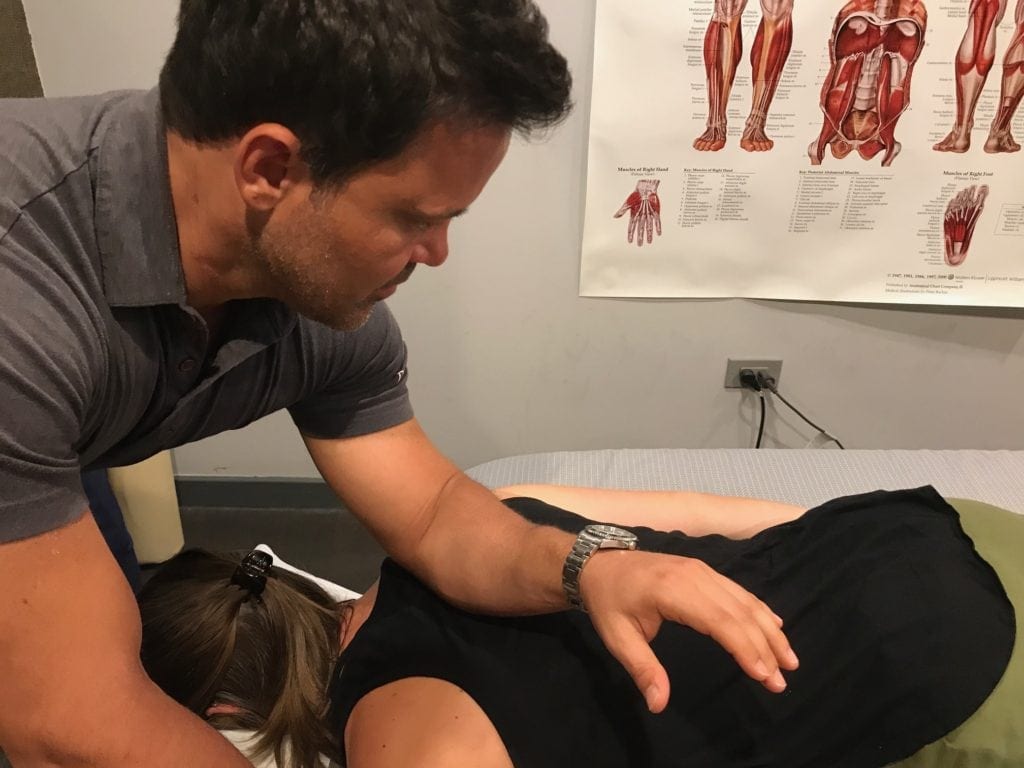
You’ll lie facedown on the table, and your therapist will begin by getting into your rhomboids (the muscles that connect your shoulder blades to your spine).
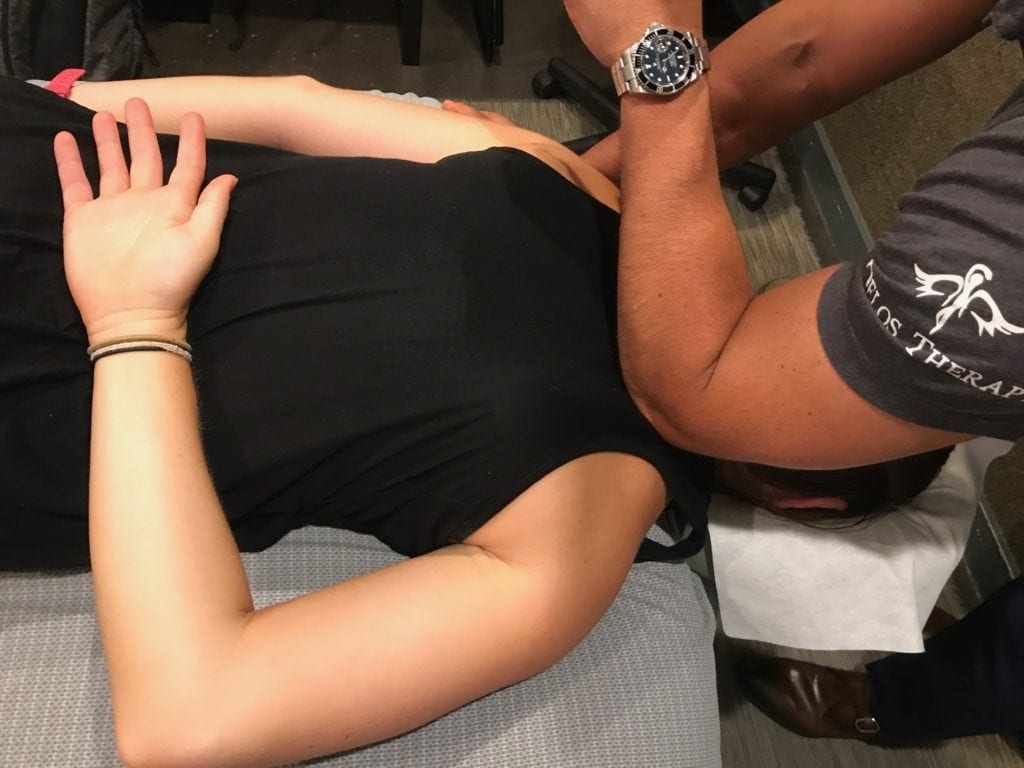
Want a little more? Ask your therapist for the pre-stretch special, so your muscles are lengthening two different ways at the same time.

Next, he’ll move up to address the trapezius muscles — alongside the top of your shoulders.
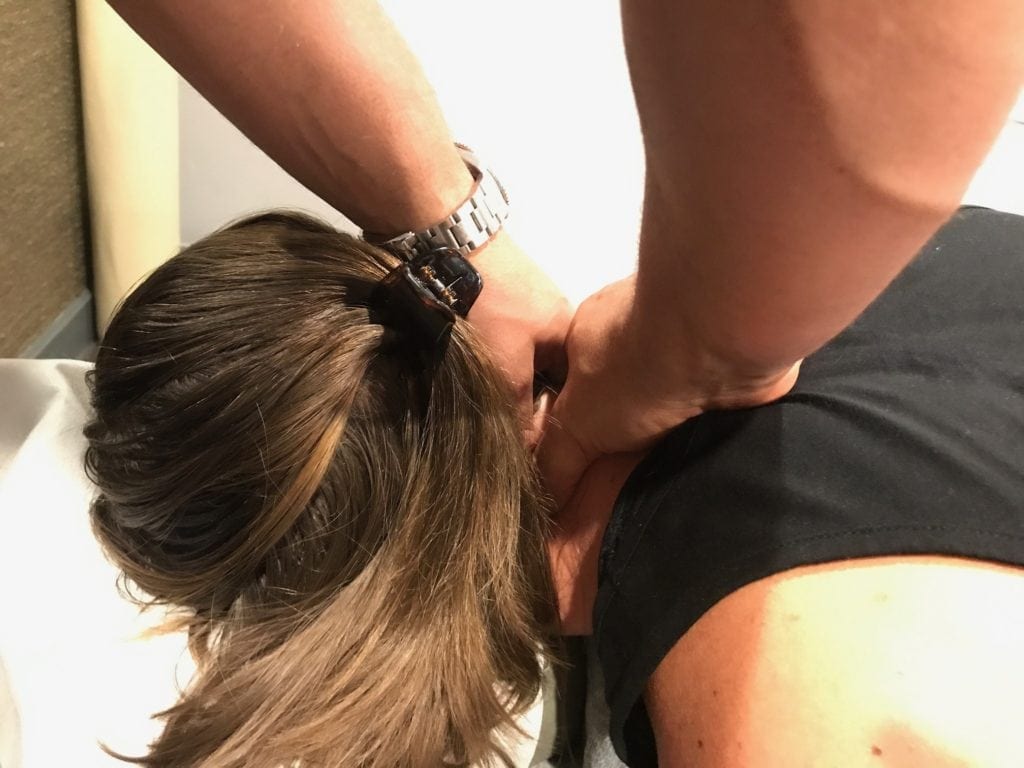
From there, it’s time to get into the cervical spine muscles in your neck. Watch out, the thumbs are coming from you.
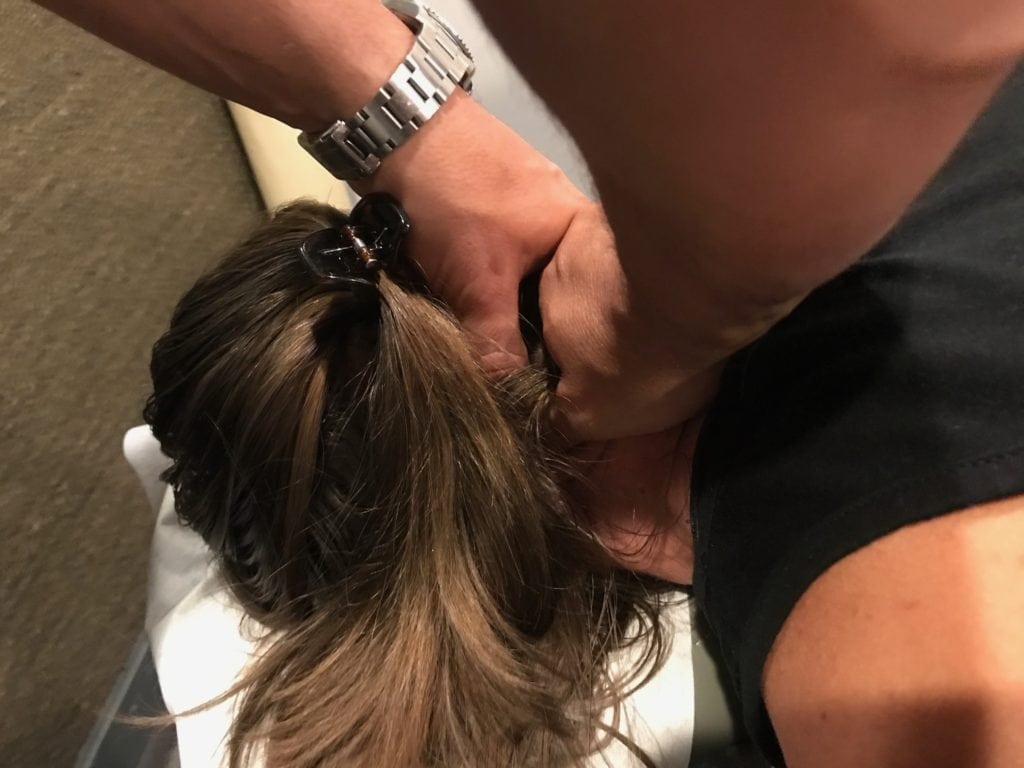
Another way to get that pre-stretch in: ask the therapist to angle the face cradle downward. You’ll scoot up a little further, and your neck will length downwards as the therapist applies pressure to restore muscle pliability.
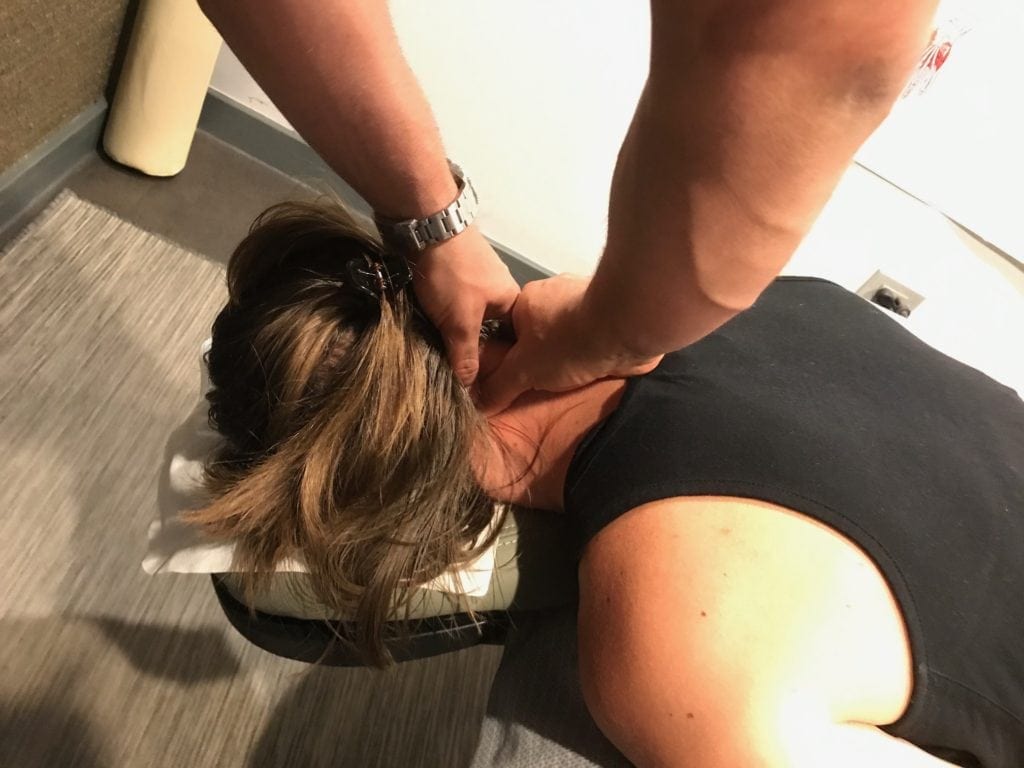
Up even further along the base of your skull are your occipitalis muscles. We’ll get in there too.
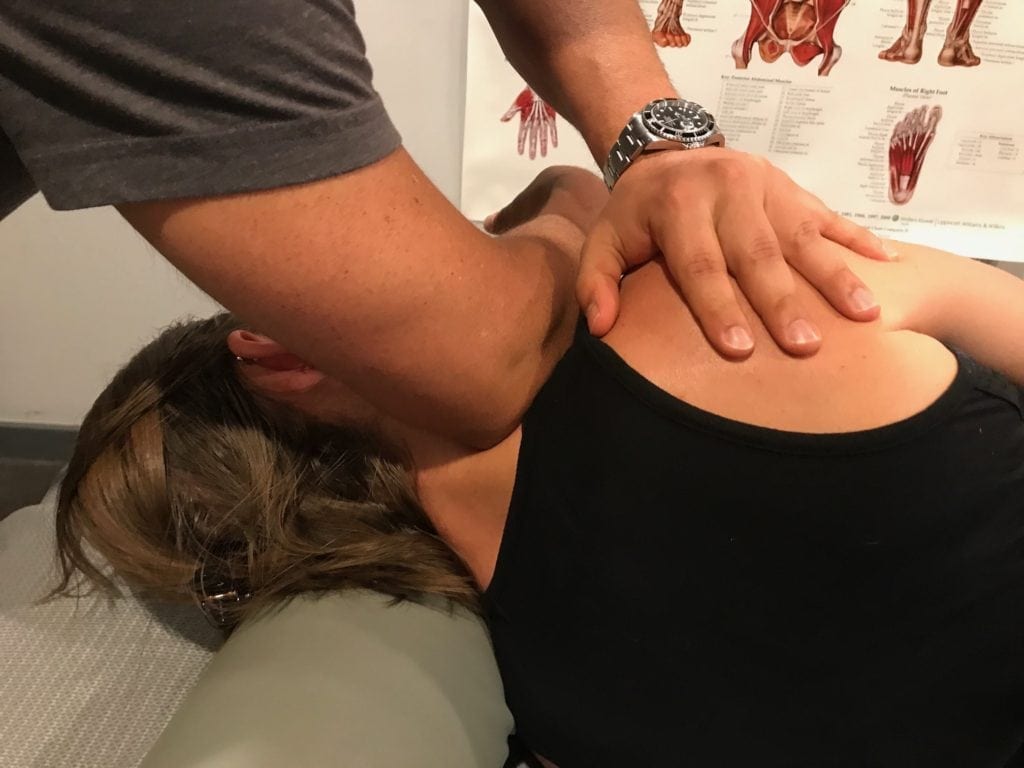
Finally, your therapist will get into the sternocleidomastoid (or SCM) muscles from all different angles as you lay on your side and back with your neck stretching in each direction. Warning: this might feel a little funky. Breathe through it.
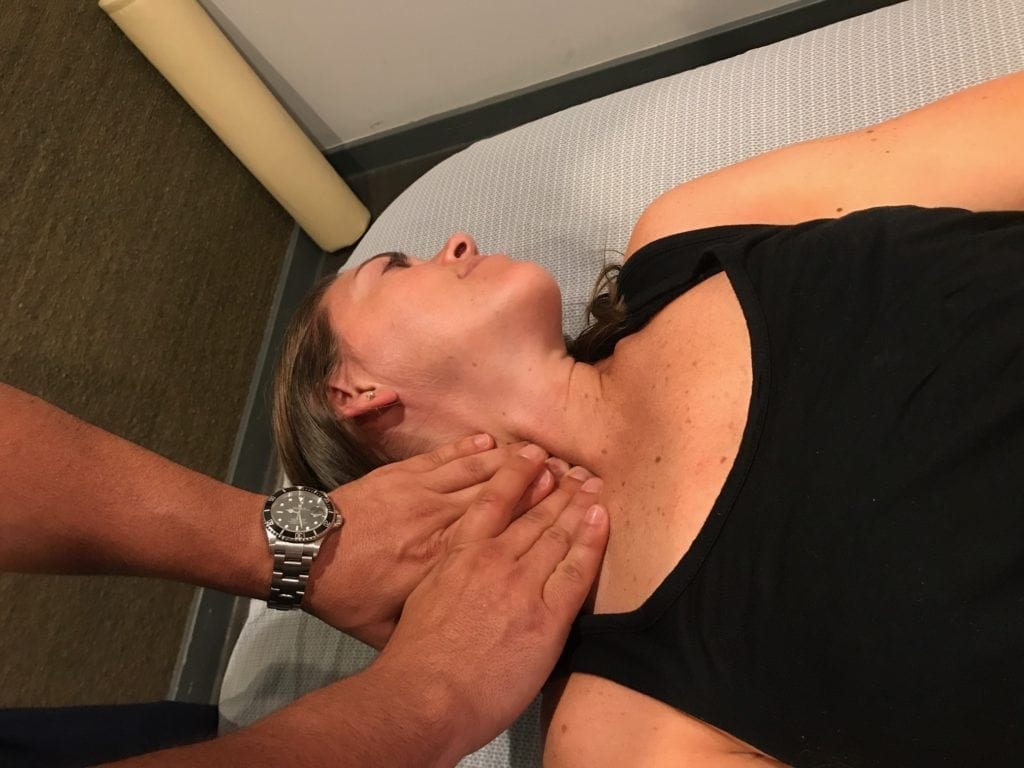
How to #DelosYourself and treat tech neck
While we’ll show you how you can use the Thera Cane and Knobble, your thumbs are your own best friend here, especially when it comes to your neck.
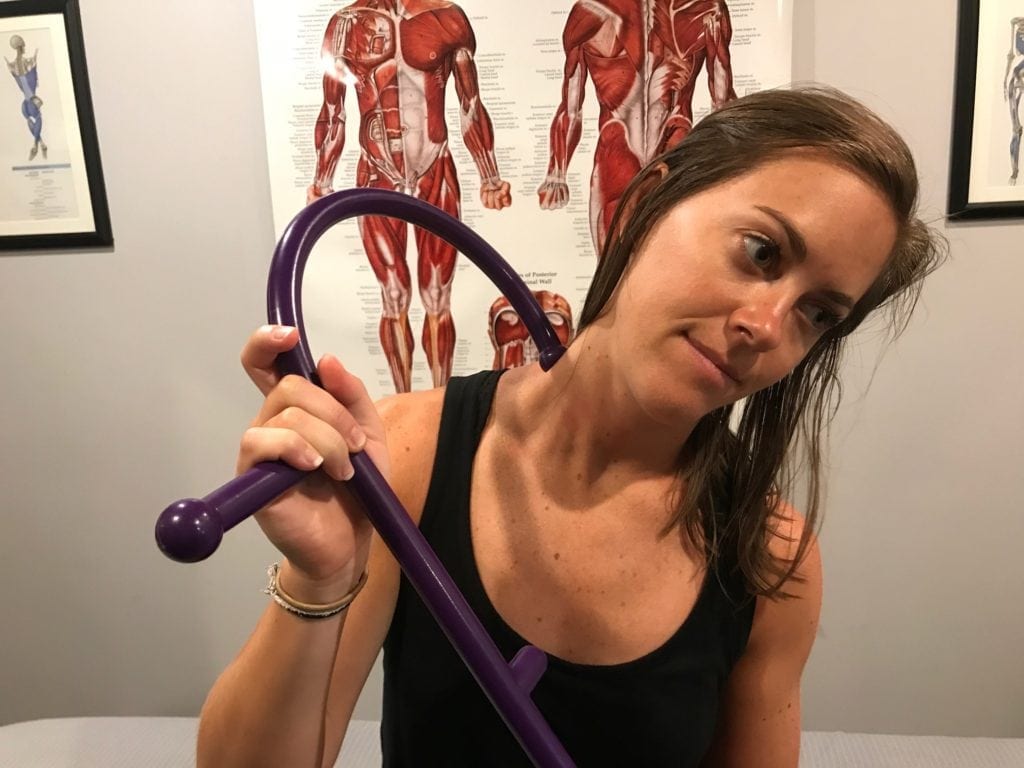
Use the curved end of the Thera Cane to dig into your rhomboids and traps, leveraging the straight part for extra pressure.
 You can even try using one of the knobs on the straight end to dig into your cervicals, but it might be difficult to lock into a steady pressure point because the area is so thin.
You can even try using one of the knobs on the straight end to dig into your cervicals, but it might be difficult to lock into a steady pressure point because the area is so thin.
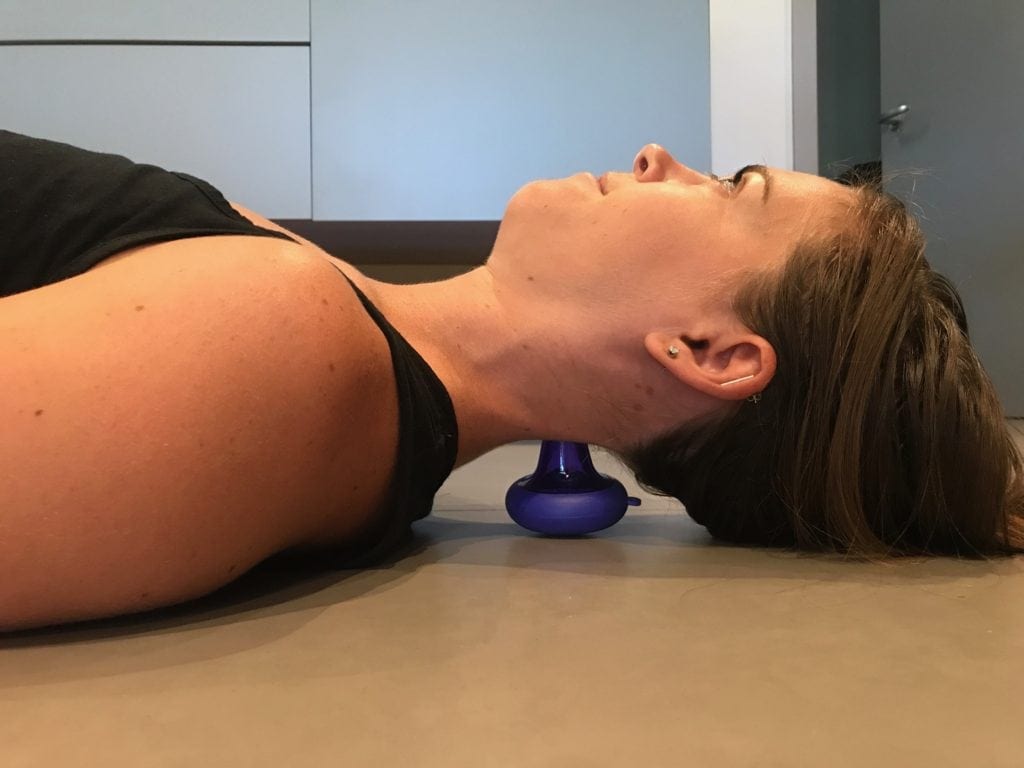
With a Knobble, you can lay on the floor and rest your neck on the knob. Pro tip: do this on a yoga mat or grippy surface so you don’t slide around. Relax into the stretch.
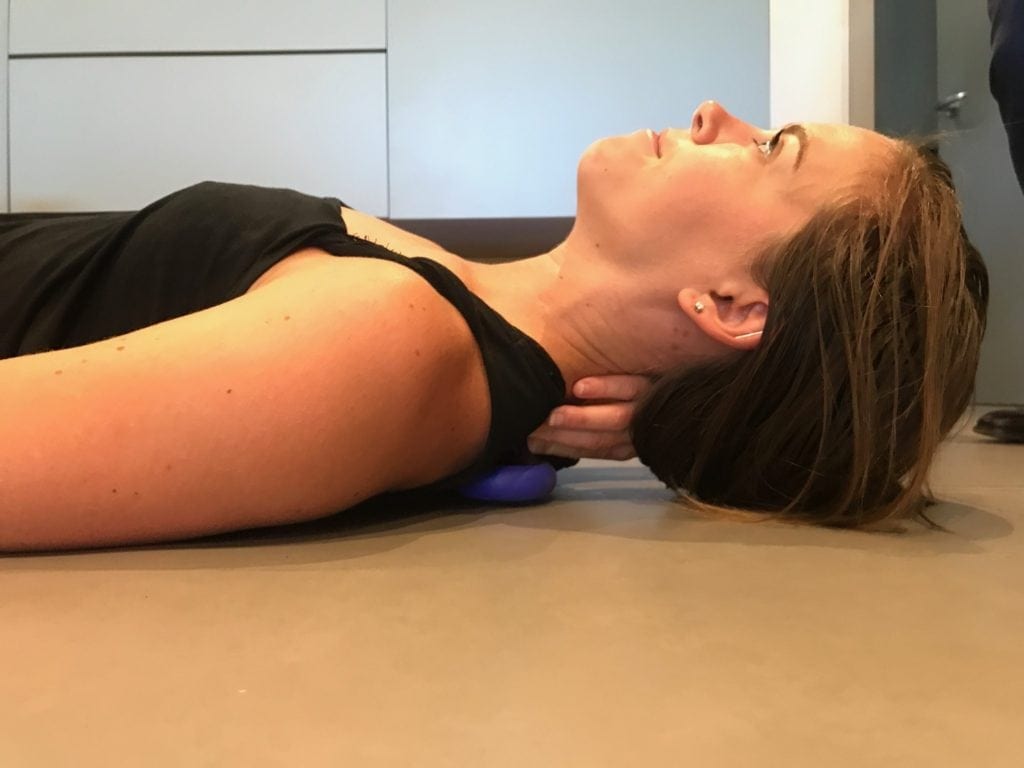
You can also use the Knobble to get into your rhomboids.

Thumbs, activate! Sitting up straight, use your thumbs to dig into your SCM. Rotate your neck from side-to-side and up-and-down to apply pressure from different angles.
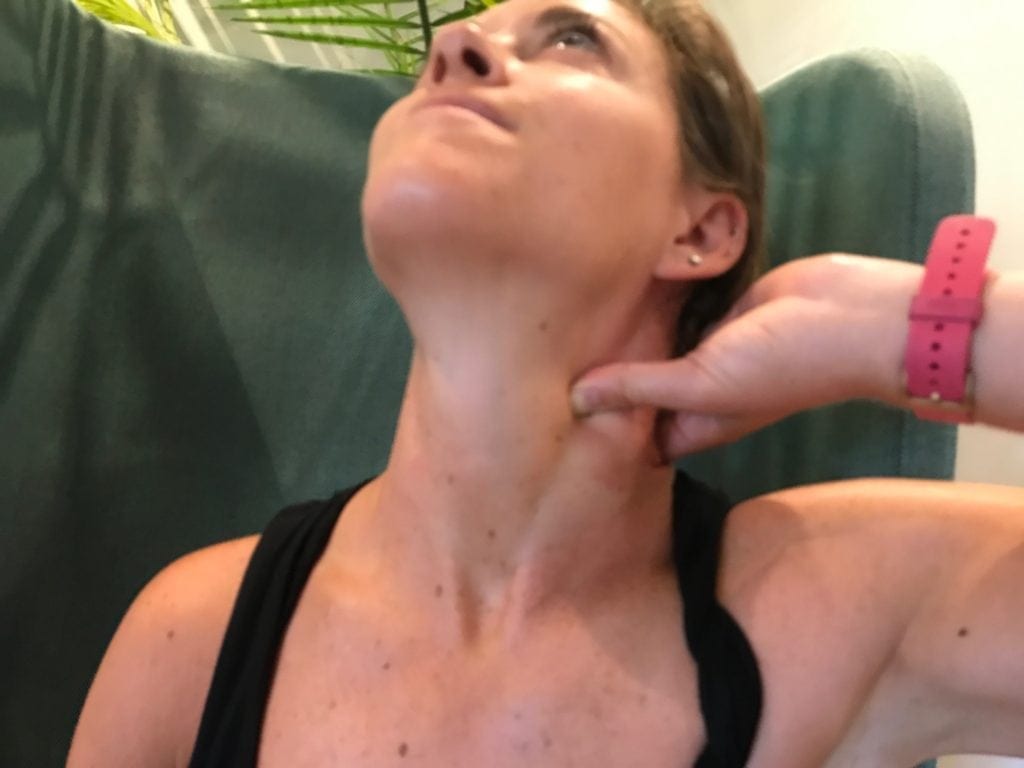
If you’re experiencing tech neck as you read this on your phone, head to the experts at Delos for a free 20-minute evaluation. And take a break from the screens — your body will thank you.












